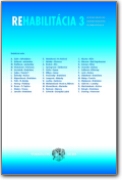Rehabilitation In Liver Cirhosis
DOI:
https://doi.org/10.61983/lcrh.v60i3.5Keywords:
liver cirrhosis, rehabilitation, sarcopenia, frailtyAbstract
Liver disease such as cirrhosis is one of the most common causes of death in middle-aged people in Slovakia. A significant complication of cirrhosis is sarcopenia, which can progress to frailty syndrome. Sarcopenia and frailty are predictors of mortality and morbidity before and after liver transplantation and are also associated with impaired quality of life. Rehabilitation represents an important part in terms of multidisciplinary management of patients with liver cirrhosis with the aim of modifying risk factors such as sarcopenia, frailty or sarcopenic obesity. A combination of personalized rehabilitation and nutritional intervention is the key. When creating an exercise program, it is necessary to know the patient's general condition and be based on diagnostic modalities that assess muscle functionality, such as the Liver Frailty Index (LFI) and the 6-minute walk test (6MWT). A combination of strength training together with aerobic exercise of medium intensity is suitable. Exercise in patients with cirrhosis can be considered safe and potentially beneficial in terms of the possibility of increasing their muscle strength, quality of life, aerobic capacity or reducing portal hypertension, risk of falls and length of hospitalization.
Downloads
Published
How to Cite
Issue
Section
License
Copyright (c) 2023 journal REHABILITÁCIA

This work is licensed under a Creative Commons Attribution-NonCommercial-ShareAlike 4.0 International License.


